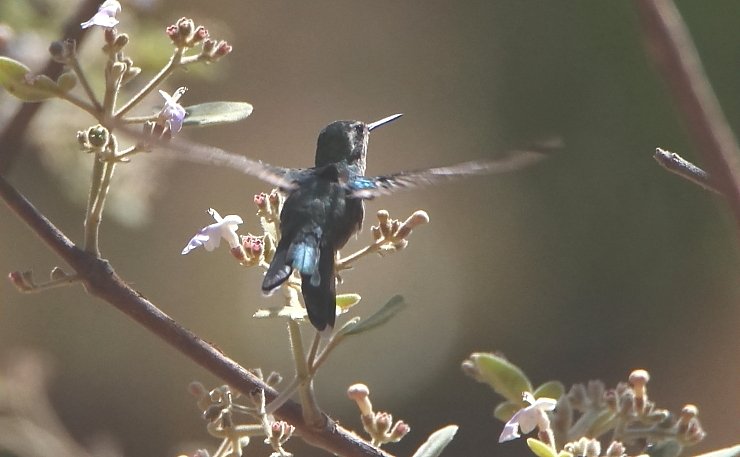
Within my self-imposed one hour birding radius around Morelia, I have so far seen 21 different hummingbirds (15 residents and 6 migratories). That may seem like a lot to the northerners among our readers, but I suspect it would not impress those who live in the northern Andes. (21 species is less than 6% of the total number of hummingbird species in the Americas.) Still, with a little bit of effort, I can see some of the smallest hummers (the Bumblebee Hummingbird and female Sparkling-tailed Woodstar, at 2.7 inches) and Mexico’s largest hummers (Rivoli Hummingbird and Blue-throated Mountain-Gem, 6 inches — although they can’t compete with the Andes’ Giant Hummingbird, which is 9 inches long!).
Most of these little lovelies have the same basic hummingird shape, differing mainly in their size, and the length/form of their bills. The males of two of my local hummers, however, get to show off very special tails. Those would be the Sparkling-tailed Woodstar, about which I have previously written, and the Golden-crowned Emerald.
It took me a while to get to the Golden-crowned Emerald because it is one of the hummers I see the least. In fact, I have only seen it five times, so far. All but one of those times, the ID occurred because I got a brief glimpse of this species’ unmistakeable long-tailed male. I have never turned these glimpses into a decent photo of my own. Fortunately, on one of those occasions I was showing off my site of Paso Ancho to an American birder friend, Bob Friedrichs, and he managed a good photo of this beautiful male:
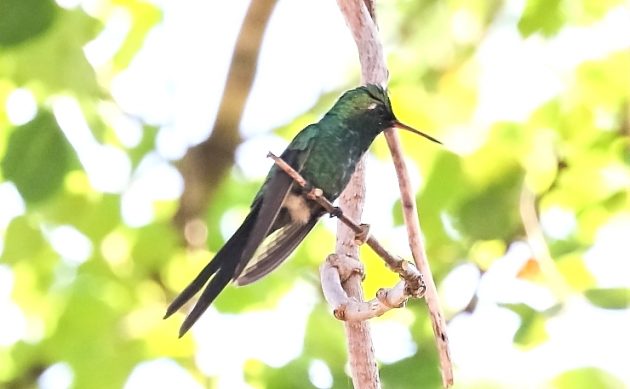
Thanks for lending me your photo, Bob!
As to the other sighting, well, it was just the other day. And, if there hadn’t been quite a few Emeralds, making constant feeding runs at what was, apparently, a very tasty tree, I might have missed them altogether.
The reason, you see, is that all of the Emeralds on this occasion were females or immature males. These look very different from their flashy adult male counterparts, and can be easily misidentified.
To explain the problem, I’ll show you pair of females of a much more common species down here, the Broad-billed Hummingbird. The females of this species (which has an almost constant presence in my garden) show a facial pattern common to many of our local hummingbirds:
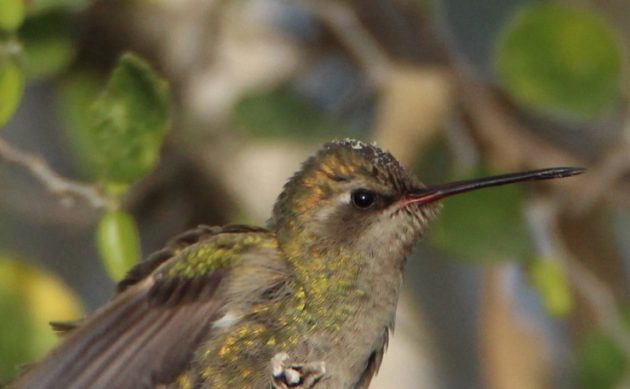
This same combination of light throat / dark auriculars / light postocular stripe can also be seen here in a variety of female hummingbirds: Dusky, Rivoli’s, and White-eared Hummingbirds, Plain-capped Starthroats, and Blue-throated and Amethyst-throated Mountain-Gems. It is not present in our migratory visitors, I’m happy to say. But with our residents, this pattern isn’t very helpful at all.
Here’s another female Broad-billed Hummingbird, and a Dusky Hummingbird for comparison. (Male and female Duskys both have this facial pattern, darn them!)
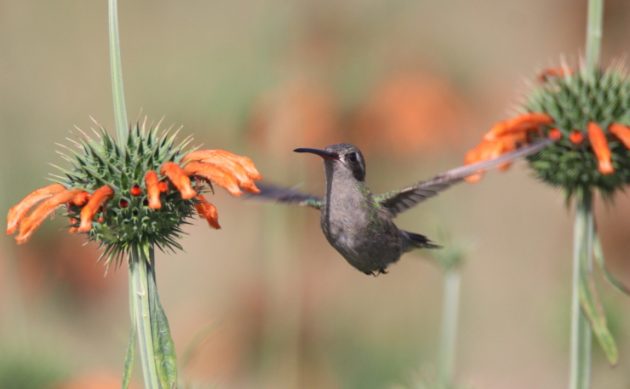
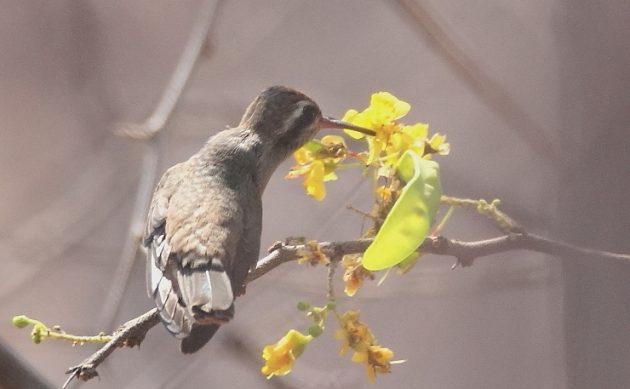
So, when I recently saw the little hummers buzzing around that tasty tree by the side of the unpaved road to Arúmbaro, at first I assumed I was watching a whole tribe of Broad-billed (or, perhaps, Dusky) Hummingbirds. But then I noticed that they looked just a bit… odd.
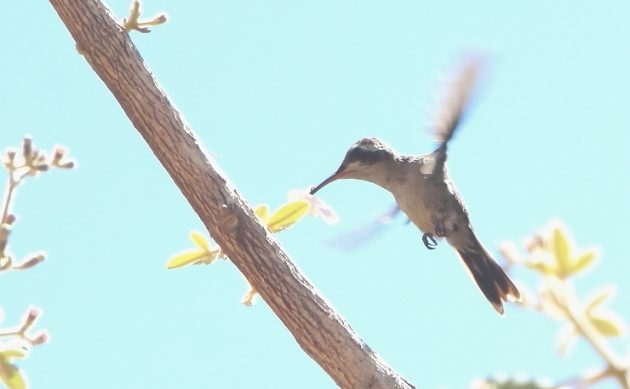
To start with, they were a bit too small. And they looked undernourished… no, wait… stretched-out. Got it! The tail is too long!
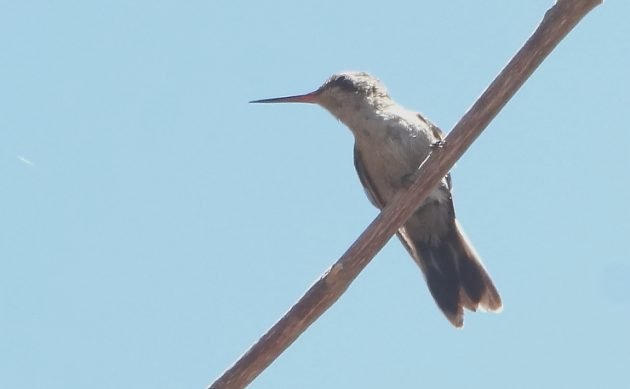
Same red bill with a dark tip, though.
And then, a few of the hummers helped me out, by spreading their divided tails. These can’t match the males’ tails, but they are still distinctive.

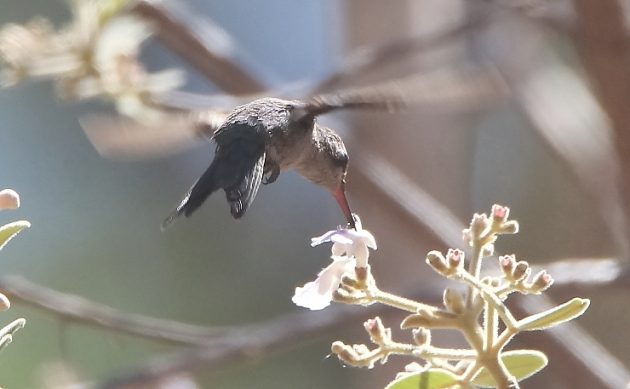
One photo revealed an individual with a few irridescent teal spots on its breast. That indicates it was not a female, but an immature male. I suspect the more intense back colors in photos #1 and #8 of this post are also of immature males.
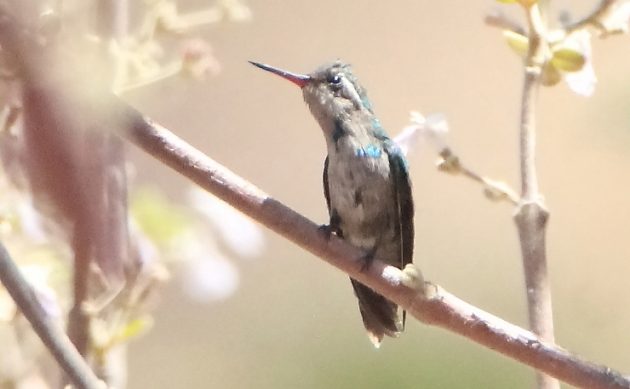
How many Emeralds were in this group? I’ll answer that question with another question: Have you ever tried to count the hummers at a busy feeder? With all the comings and goings, I would guess there were anywhere from 5-10. Whatever the number, it was quite a show.
The Golden-crowned Emerald has several close relatives which are almost identical, except for their males having slightly shorter tails. All share the “Emerald” name, and the genus Cynanthus. The Broad-billed Hummingbird is also considered a Cynanthus, but the extremely similar Dusky Hummingbird is not. Just to confuse things even more, many other “Emeralds” are also in the same family and tribe, but belong to, according to current taxonomy, up to 8 different genera. As for the Golden-crowned Emerald, if you want to get to know this particular little crown jewel, you will have to come to western Mexico. It occurs nowhere else in the world.
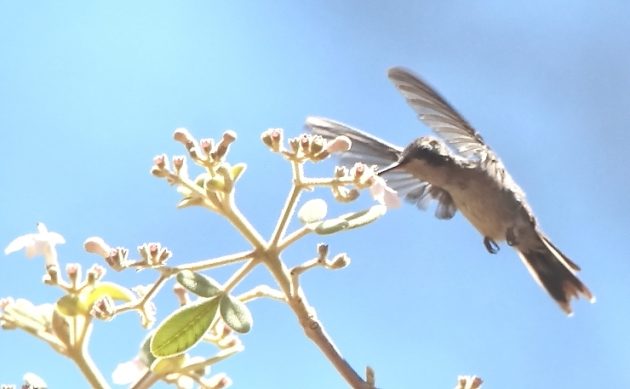













Leave a Comment